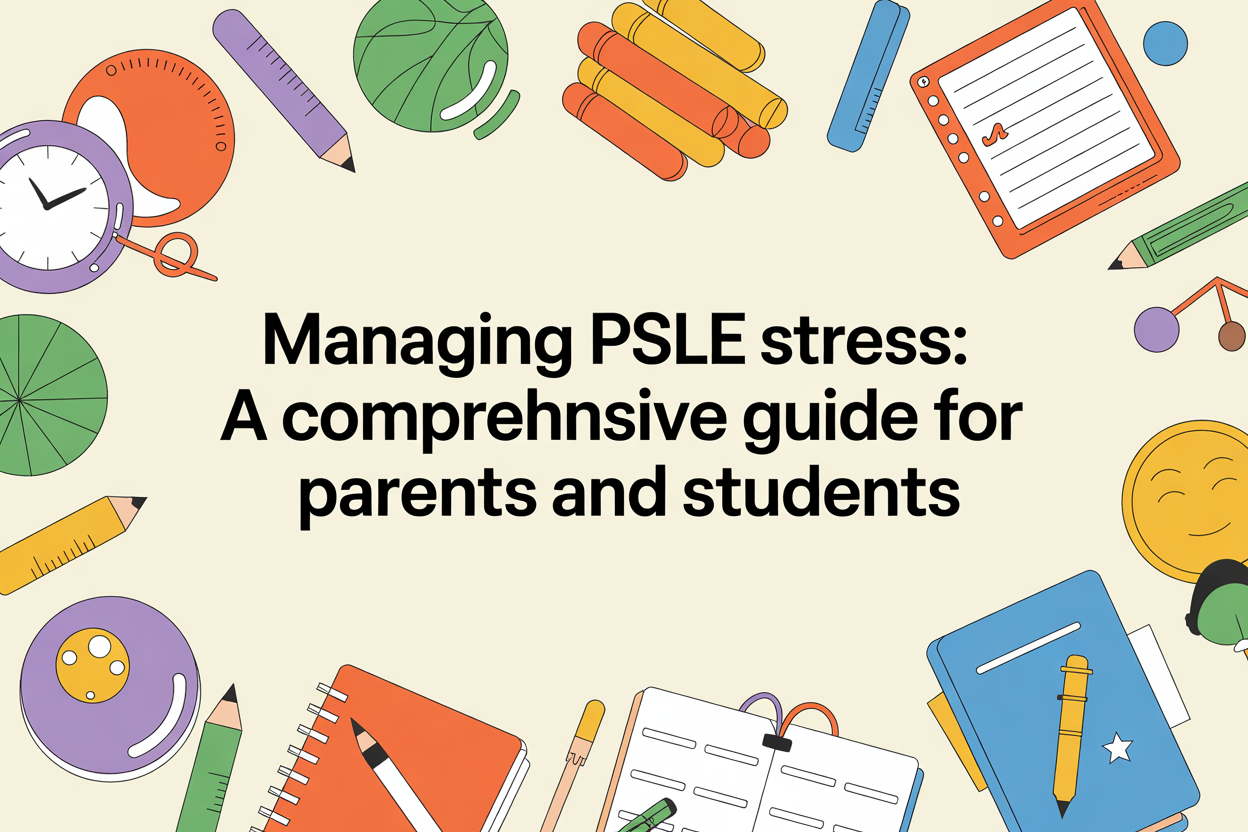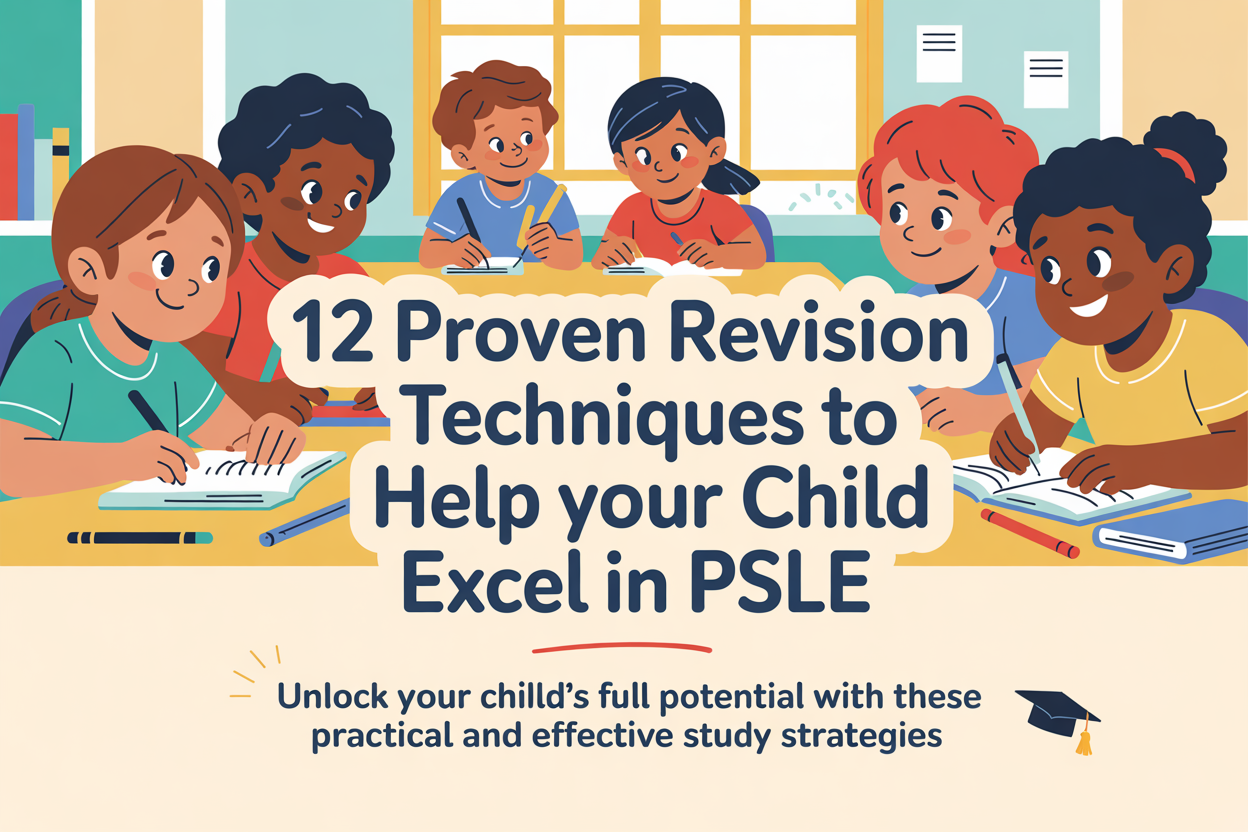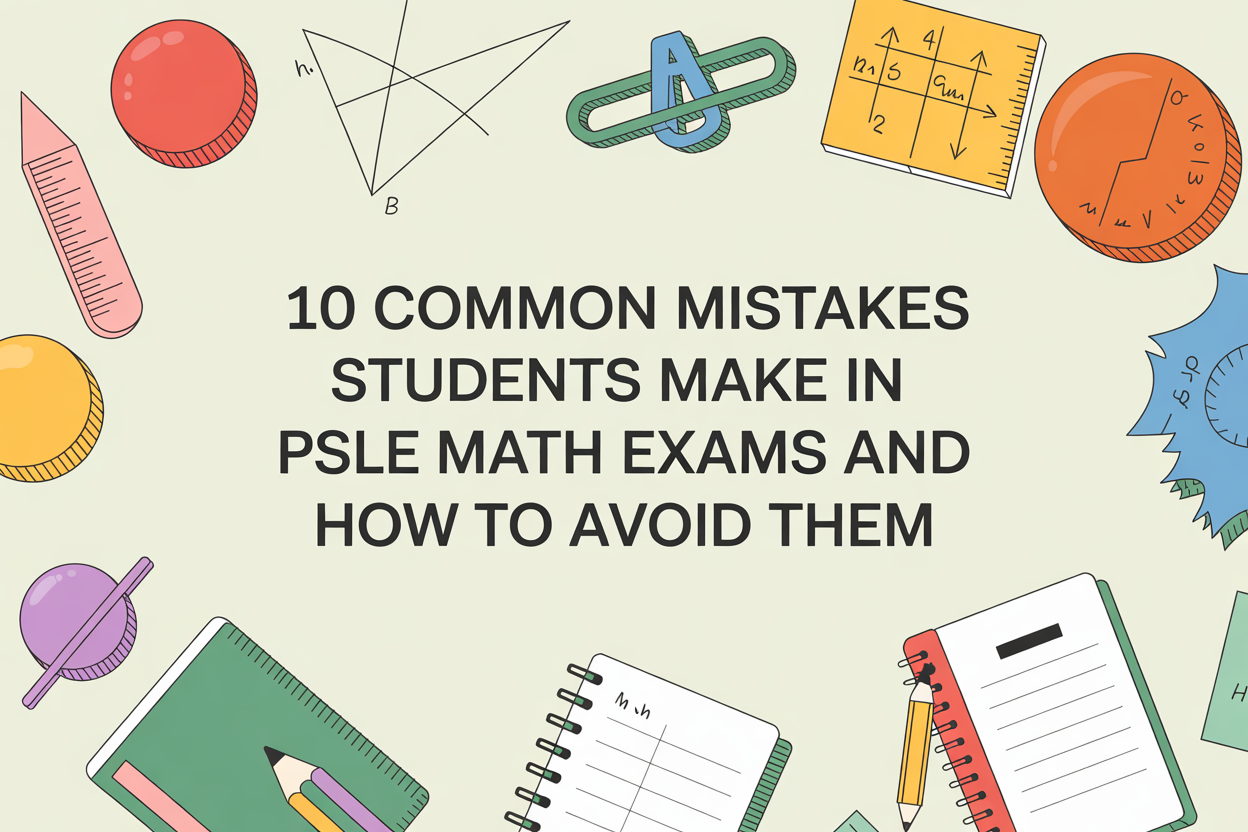- May 14, 2025 -
Bridging the Gap: Primary English to Secondary English – A Comprehensive Guide
Table of Contents
- Understanding the Differences: Primary vs. Secondary English
- Key Challenges Students Face During the Transition
- Essential Skills Needed for Secondary English Success
- How Parents Can Support Their Child’s Transition
- How EduFirst Helps Bridge the Primary-Secondary English Gap
- Practical Tips for Students Preparing for Secondary English
- Conclusion
The transition from primary to secondary school represents a significant milestone in a student’s educational journey in Singapore. Particularly in English language learning, this transition brings new challenges, elevated expectations, and a considerable shift in teaching approaches. Many students who performed well in primary school English find themselves struggling to adapt to secondary English requirements, leading to decreased confidence and academic performance.
Parents often notice their children encountering unfamiliar literary terms, more complex comprehension passages, and writing assignments that require deeper analytical thinking. This sudden increase in difficulty is not uncommon – it’s part of a deliberate progression in Singapore’s education system designed to prepare students for higher academic pursuits and future workplace demands.
Understanding this gap and preparing adequately for it can make a substantial difference in a student’s secondary school experience and long-term academic success. In this comprehensive guide, we’ll explore the key differences between primary and secondary English, identify common challenges, and provide practical strategies to help students make this transition successfully.
Understanding the Differences: Primary vs. Secondary English
The shift from primary to secondary English education in Singapore involves several fundamental changes that students and parents should be prepared for. In primary school, English learning focuses primarily on building basic language proficiency, fundamental grammar rules, and simple composition skills. The texts are shorter, the vocabulary more common, and the analysis relatively straightforward.
Secondary English, however, introduces a more sophisticated approach to language learning. Students encounter more complex literary texts, including classic and contemporary literature, requiring deeper analysis and interpretation. The curriculum emphasizes critical thinking, nuanced comprehension, and the ability to construct well-reasoned arguments in various writing formats. Grammar and vocabulary expectations increase significantly, with students expected to understand and apply advanced language concepts.
Assessment methods also change considerably. While primary assessments often test direct knowledge and basic application, secondary assessments evaluate analytical abilities, creative thinking, and the capacity to develop original perspectives on texts and topics. This shift requires students to develop new learning strategies and adapt to more independent study approaches.
Another significant difference is the introduction of literature as a distinct component. Secondary students must analyze literary devices, understand thematic elements, and interpret character development – skills that were only lightly touched upon in primary education. This literary focus demands a more mature approach to reading and textual analysis that many students find challenging without proper preparation.
Key Challenges Students Face During the Transition
More Complex Comprehension Passages
One of the most immediate challenges students encounter is the increased complexity of comprehension passages. Secondary English texts feature more sophisticated vocabulary, complex sentence structures, and abstract concepts. Students must navigate through multiple paragraphs of dense information, identifying main ideas while understanding subtle nuances – a significant leap from the more straightforward primary school passages.
Advanced Vocabulary Requirements
The vocabulary demands in secondary English increase exponentially. Students are expected to understand and correctly use a wider range of words, including academic vocabulary, literary terms, and subject-specific language. This vocabulary expansion is not just about knowing more words but understanding their connotations, contextual usage, and appropriate application in different writing scenarios.
Expanded Writing Formats and Styles
Writing requirements become more diverse and complex in secondary school. Beyond basic compositions, students must master various formats including expository essays, argumentative writing, personal reflections, and formal reports. Each format has specific structural requirements and stylistic expectations. Additionally, students must develop their unique writing voice while adhering to these formal requirements – a delicate balance that many find challenging.
Critical Thinking and Analytical Skills
Secondary English places significant emphasis on critical thinking and analysis. Students must move beyond literal comprehension to interpret texts, analyze author intentions, evaluate arguments, and form personal responses supported by textual evidence. This analytical approach represents a major shift from the more fact-based learning typical in primary English, requiring students to develop new cognitive skills and approaches to reading.
Independent Learning Expectations
Perhaps one of the most significant transitions is the expectation of greater independence in learning. Secondary school teachers provide less direct guidance, expecting students to take initiative in their learning process. This includes independent research, self-directed revision, and proactive clarification of doubts. Students accustomed to more structured primary school environments often struggle with this newfound responsibility.
Essential Skills Needed for Secondary English Success
Advanced Comprehension Strategies
To succeed in secondary English, students need to develop advanced reading comprehension strategies. This includes the ability to identify main ideas and supporting details, understand implicit meanings, recognize author’s purpose, and make inferences based on textual evidence. Skimming and scanning techniques become essential skills for navigating longer texts efficiently, while annotation methods help in organizing thoughts during reading.
Critical Analysis Techniques
Critical analysis forms the cornerstone of secondary English. Students must learn to question texts, consider multiple perspectives, evaluate the effectiveness of arguments, and understand how literary devices contribute to meaning. This requires moving beyond personal opinions to develop evidence-based interpretations that demonstrate depth of thought and careful consideration of the text.
Extended Writing Capabilities
Secondary English demands more sophisticated writing skills across various formats. Students need to master paragraph development, thesis construction, argument building, and effective conclusion writing. They must learn to incorporate evidence appropriately, transition smoothly between ideas, and maintain coherence throughout longer pieces of writing. Style elements such as tone, voice, and audience awareness become increasingly important as students develop their writing identities.
Vocabulary Expansion Methods
A robust vocabulary is crucial for secondary English success. Students benefit from systematic vocabulary acquisition strategies, including contextual learning, word family exploration, and regular use of new terminology. Understanding word origins, prefixes, suffixes, and root words helps students decipher unfamiliar words they encounter in increasingly complex texts. Additionally, learning to use reference materials effectively becomes an important skill for independent vocabulary development.
Self-directed Learning Approaches
The ability to learn independently becomes particularly important in secondary school. Students need to develop effective study habits, time management skills, and self-motivation strategies. This includes setting personal learning goals, creating effective study schedules, identifying areas needing improvement, and seeking appropriate resources and support when necessary. These self-management skills extend beyond English to benefit all academic subjects.
How Parents Can Support Their Child’s Transition
Creating a Conducive Home Learning Environment
Parents play a crucial role in facilitating a smooth transition to secondary English. Creating a quiet, well-equipped study space free from distractions helps students focus on increasingly complex assignments. Establishing consistent study routines that accommodate longer-term projects and regular reading time creates structure while teaching time management. Parents should balance support with autonomy, gradually allowing more independence as students adapt to secondary school expectations.
Encouraging Regular Reading Habits
Regular reading remains one of the most effective ways to develop English language skills. Parents can encourage diverse reading habits by providing access to various genres, discussing reading materials, and modeling reading behavior themselves. Introducing slightly challenging texts while ensuring they remain engaging helps build reading stamina and vocabulary. Literary classics, quality contemporary fiction, reputable news sources, and subject-related non-fiction all contribute to developing the well-rounded literacy skills needed for secondary English.
Monitoring Progress Without Adding Pressure
Finding the right balance between monitoring academic progress and avoiding excessive pressure is challenging but essential. Parents should maintain open communication with teachers, attend parent-teacher meetings, and review feedback on assignments. However, this monitoring should be supportive rather than stress-inducing. Celebrating improvements, acknowledging efforts, and providing encouragement during difficulties helps maintain student confidence during this challenging transition.
When to Consider Additional Support
Parents should remain attentive to signs that additional support may be beneficial. Persistent struggles with comprehension, consistently poor writing scores, or noticeable anxiety about English assignments may indicate that extra help is needed. This support might come through school resources, peer study groups, or professional tuition services like EduFirst Learning Centre, which specializes in bridging educational transitions with personalized attention in small class settings.
How EduFirst Helps Bridge the Primary-Secondary English Gap
Specialized Transition Programs
At EduFirst Learning Centre, we’ve developed specialized programs specifically designed to bridge the gap between primary and secondary English. Our curriculum strategically addresses the key differences in skill requirements, gradually introducing secondary-level concepts while building upon primary foundations. This stepped approach ensures students develop confidence with new material before advancing to more challenging concepts, creating a smoother transition experience.
Small Class Sizes for Personalized Attention
Our commitment to maintaining small class sizes of 4-8 students creates the ideal learning environment for navigating this crucial transition. With these intimate class settings, our teachers can closely monitor individual progress, identify specific challenges, and provide targeted support where needed. This personalized attention ensures that no student falls behind during this critical adjustment period and that each learner receives the specific guidance they need to thrive in secondary English.
Expert Teachers Familiar with Both Primary and Secondary Requirements
EduFirst teachers possess comprehensive knowledge of both primary and secondary English curricula in Singapore. This dual expertise allows them to identify precisely what skills students need to develop for secondary success while understanding their primary school foundations. Our educators can effectively explain the differences in expectations, teaching methods, and assessment approaches, helping students understand exactly what changes they need to adapt to.
Proven Strategies and Methodologies
Through years of educational experience, EduFirst has developed effective methodologies for building secondary English skills systematically. Our approach includes structured vocabulary expansion programs, dedicated critical thinking exercises, and graduated writing practice across various formats. We employ interactive learning techniques that engage students actively in the learning process, making even challenging concepts accessible and interesting. Our proprietary materials bridge the gap between primary and secondary resources, providing that crucial stepping stone many students need.
Practical Tips for Students Preparing for Secondary English
Summer Preparation Activities
The months between primary graduation and secondary school commencement provide an ideal opportunity to prepare for the transition. Students can benefit from reading age-appropriate literature that introduces slightly more challenging concepts without being overwhelming. Creating vocabulary journals, practicing different writing formats, and exploring online resources designed for secondary preparation can build confidence before school begins. EduFirst’s holiday programs specifically target this crucial preparation period, giving students a head start on secondary English requirements.
Building Reading Stamina
Secondary English involves longer texts and more extensive reading assignments, requiring greater reading stamina. Students can gradually build this capacity by increasing reading duration over time, starting with 15-20 minutes of focused reading and progressively extending to 40-60 minutes. Varied reading materials keep this practice engaging while exposing students to different writing styles and vocabulary. Discussing reading material with parents or peers adds an analytical dimension that prepares students for classroom discussions in secondary school.
Developing Note-taking Skills
Effective note-taking becomes increasingly important in secondary English, where lessons cover more complex concepts at a faster pace. Students should practice identifying key points, summarizing information concisely, and organizing notes in a retrievable format. Visual organizers, outline methods, and annotating techniques can be practiced during holiday reading to develop these crucial skills before secondary school begins. Good note-taking not only aids understanding but also creates valuable revision resources for later reference.
Time Management for Longer Assignments
Secondary English assignments typically require more extended work periods and better planning than primary school tasks. Students benefit from learning to break larger projects into manageable steps with self-imposed deadlines. Practicing planning essays before writing, creating outlines for longer compositions, and allowing time for revision and editing helps develop the project management approach needed for secondary success. These time management skills transfer across subjects, supporting overall academic achievement in secondary school.
Conclusion
The transition from primary to secondary English represents a significant step in a student’s educational journey. While the challenges are real – including more complex texts, advanced vocabulary requirements, sophisticated writing expectations, and greater independence – they are entirely manageable with appropriate preparation and support. Understanding these changes in advance allows students and parents to approach this transition strategically rather than reactively.
The key to successful bridging lies in gradual skill development, regular practice, and access to knowledgeable guidance. By focusing on building critical thinking abilities, expanding vocabulary systematically, developing advanced writing skills, and cultivating independent learning habits, students can navigate this transition confidently and lay the groundwork for long-term academic success.
At EduFirst Learning Centre, we’ve witnessed countless students transform initial apprehension about secondary English into confidence and achievement. With the right support system – whether through parents, schools, or specialized programs like ours – students can not only bridge the gap between primary and secondary English but thrive in their new academic environment. This transition, approached properly, becomes not just a challenge to overcome but an opportunity for significant educational growth.
Ready to prepare your child for a successful transition to secondary English? EduFirst Learning Centre offers specialized programs designed to bridge this crucial educational gap with small class sizes and expert teachers. Contact us today to learn more about our English programs and how we can support your child’s academic journey.
Enquire now or visit our website for more information about our locations and programs across Singapore.



